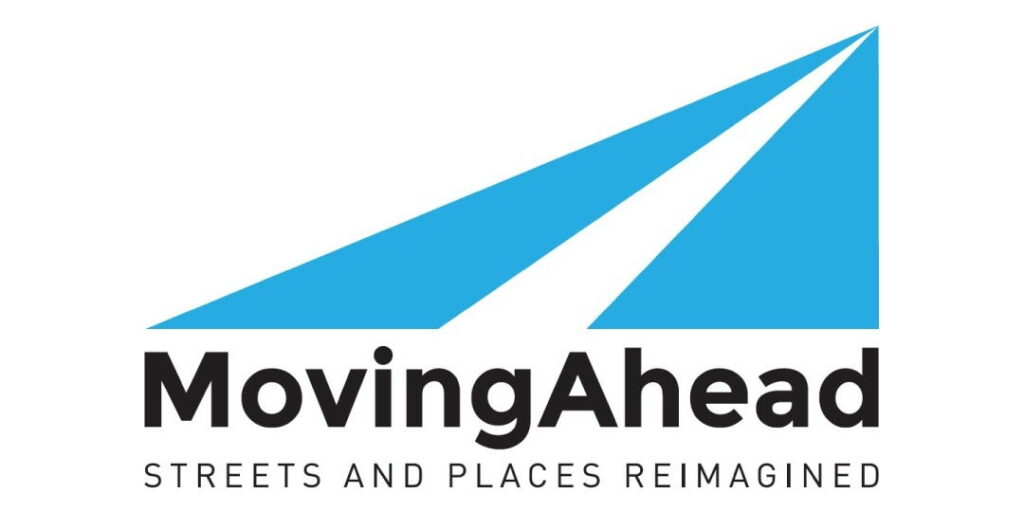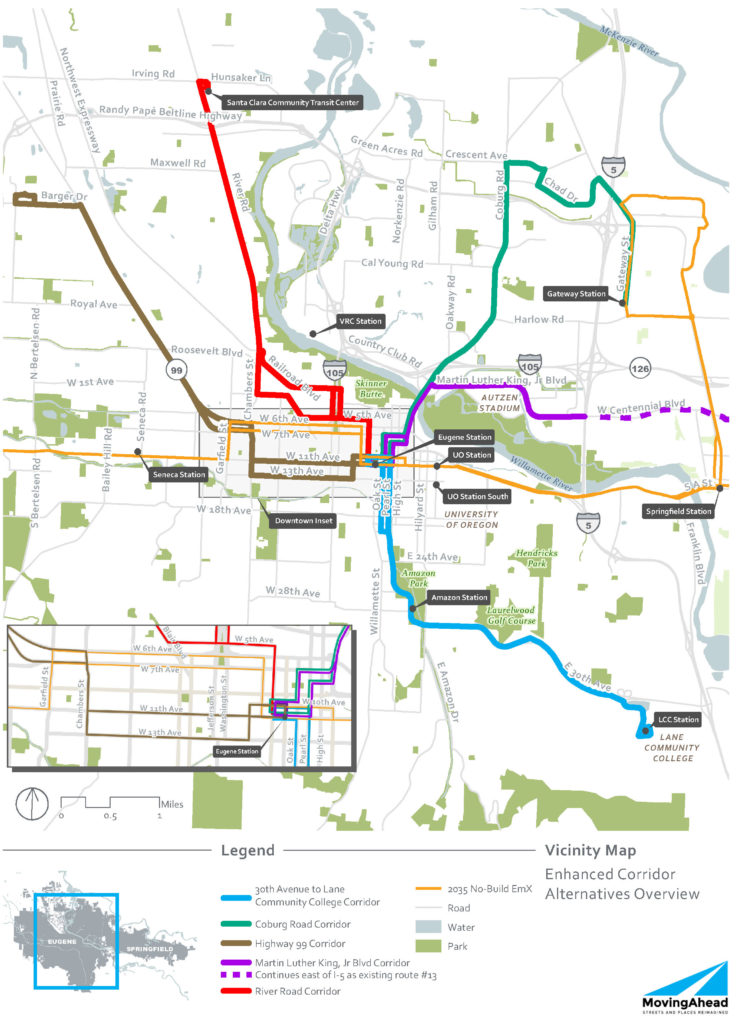BEST, Eugene Chamber support MovingAhead
“We and many others in the community believe such targeted investments, with federal support, are the smart way to benefit everyone getting where they need to go, safely, and to invest in the long-term health of our local economy.”

Everyone needs safe and convenient ways to get where they are going.
The City of Eugene has adopted plans—Envision Eugene, its Transportation System Plan, and its Vision Zero Action Plan—that call for more investment along six key corridors, for fewer vehicle trips, and for safe travel for all.
In 2015, the City of Eugene and Lane Transit District launched MovingAhead to refine plans for five major corridors. Now approving MovingAhead will lay the foundation for federal funding to implement those plans.
A growing population means more drivers. From 2000 to 2021, the population of Eugene increased by roughly 37,000 people, increasing traffic congestion and travel times.
Widening streets to address congestion would require demolishing some homes and businesses. Given that roughly a quarter of Oregonians do not have a driver’s license, whether due to age, ability, income or choice, another approach is to facilitate some people using other modes of transportation—like walking, biking, or riding the bus.
Eugene needs to invest in complete streets that serve the needs of drivers and non-drivers alike.
More people will ride the bus if it runs more often to more places, reducing congestion for those who drive. With federal funding, Lane Transit District can provide quicker and more reliable service by investing in enhancements such as pullouts and traffic signals giving buses a head start.
More Eugeneans will walk, bicycle, or use a wheelchair or other mobility device if it is safe and convenient to do so. However, in 2019, almost 20 percent of people killed on Oregon’s roads were walking or biking. According to Smart Growth America, many roads are dangerous by design for those not driving.
Much of Eugene’s funding for transportation goes to maintaining the streets we have, and much state funding goes to highways. Federal funding is needed to make significant investments in complete streets.

MovingAhead is our path to qualify for federal funding to improve five major travel routes in our community:
River Road out to Santa Clara is a growing part of our community. Too often, tragedies occur due to poor street design. Creating separate lanes for people walking, biking, riding buses, and driving cars will facilitate safe travel for everyone. MovingAhead’s EmX alternative will enable federal funding for these improvements. City of Eugene support for targeted (re)development will ensure that EmX enjoys strong ridership like we see on Franklin Boulevard.
Highway 99 runs through an underserved part of our community. There isn’t much development or safe facilities for people walking or biking. MovingAhead’s Enhanced Corridor alternative will fund improvements. For such investments to make financial sense, the City of Eugene should prioritize a refinement plan for how the Highway 99/ Bethel area can grow.
Coburg Road is overly congested. If we do nothing, it will only get worse. With limited right-of-way, we can make targeted improvements to get the most out of the street that we have. MovingAhead’s Enhanced Corridor alternative can make the street better for all modes of travel. Realistic discussions, especially with business and property owners, are needed to determine exactly which investments make sense.
Martin Luther King Jr. Boulevard serves Autzen Stadium, businesses, residents, and students. The City of Eugene is already planning safety improvements for those walking or biking. MovingAhead’s Enhanced Corridor alternative will help fund these improvements and more.
30th Avenue runs to Lane Community College. LTD is studying its service to LCC; Lane County is studying improvements for people walking and biking. A wait-and-see approach—MovingAhead’s no build alternative—makes sense.
At a joint work session on February 28, the Eugene City Council and LTD Board of Directors will review options. In March, each body will be asked to approve a locally preferred alternative for each of the five MovingAhead corridors, defining the general approach and gaining eligibility for federal funding. Follow up design and engineering will detail which improvements will be made. The City of Eugene is committed to working with affected property and business owners to avoid, minimize, and mitigate impacts.
We and many others in the community believe such targeted investments, with federal support, are the smart way to benefit everyone getting where they need to go, safely, and to invest in the long-term health of our local economy.
Alexis Biddle is President of Better Eugene-Springfield Transportation. He is also Great Communities Program Director and Staff Attorney for 1000 Friends of Oregon. Brittany Quick-Warner is President and CEO of the Eugene Area Chamber of Commerce.
A version of this opinion piece was published in The Register-Guard on March 3, 2022.
Further reading
- Officials will vote soon on MovingAhead concept plans, but there are still chances to weigh in (Register-Guard, 3/7/22)
- River Road Community Organization endorses MovingAhead: ‘Most neighbors’ support EmX (Eugene Community Newswire, 3/4/22)